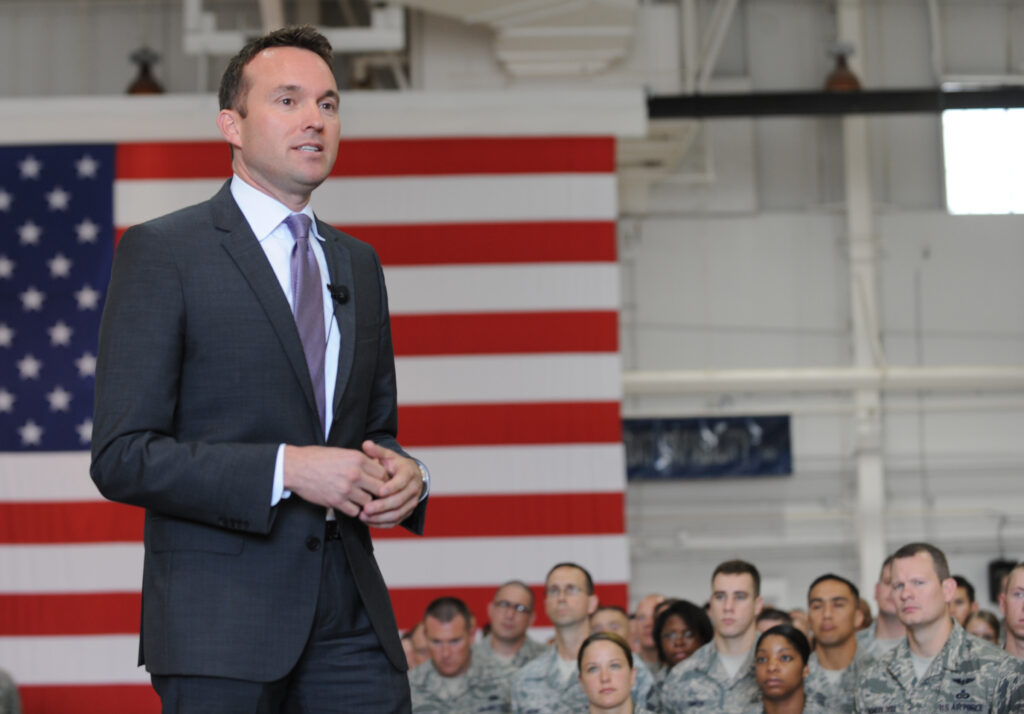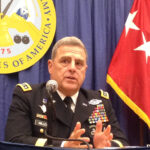Army: Three New Leaders, Three Big Challenges
Posted on

Eric Fanning
WASHINGTON: On purpose or otherwise, the administration is building a truly interesting team at the top of the Army. Call them Mister Pentagon, Mister Hill, and General Trenches:
- Mr. Pentagon is Eric Fanning, not yet formally nominated for Army Secretary but the nigh-certain candidate. Fanning served as acting Air Force Secretary, Deputy Undersecretary of the Navy, and most recently as chief of staff to Defense Secretary Ash Carter, making him the consummate well-connected Pentagon insider.
- Mr. Hill is Patrick Murphy, nominated last week to be undersecretary of the Army. In 2007, Murphy became the first Iraq veteran in Congress, where he represented Pennsylvania until 2011. An anti-war, pro-gay liberal, Murphy didn’t endear himself to the conservatives now running the Hill, but five years as a colleague — including on the Armed Services Committee — still counts in Congress even in this partisan era.
- Gen. Trenches is Mark Milley, the recently confirmed Chief of Army Staff. A “soldier’s soldier” with a blunt manner and little experience in Washington, Gen. Milley lacks the others’ inside-the-Beltway contacts, but he has a lifetime in uniform to give him credibility beyond it.

Patrick Murphy
The division of labor here is obvious. Fanning keeps close to his old boss Carter and generally deals with the Office of the Secretary of Defense and the other military departments, since he’s served in both. (The Marines are part of the Navy Department). Murphy heads up to the Hill on a regular basis to cajole his old colleagues, especially on the House Armed Services Committee. And Milley manages the uniformed military itself.

Gen. Mark Milley
The catch, of course, is getting all three men to work together so they’re using their different talents to advance the same agenda.
“I think you are on to something,” said retired Lt. Gen. Guy Swan, vice-president of the powerful Association of the US Army, when I ran my analysis past him. “Each of these leaders has unique connections, experiences, and circles that they operate in – all of which are vital to the Army. Building a team among themselves, especially with less than 18 months left in the Obama administration, must be a high priority for them.”
The New Team’s Top Three Problems
The team’s top problem will be the budget, especially if the Budget Control Act caps (aka sequestration) come into force in fiscal 2016. Fiscal pressures already have forced the Army to cancel programs, cut back training, and, most dramatically, shed 40,000 active-duty soldiers.
Because the Army is the military service with the most people — land warfare is labor-intensive — it naturally gets cut the most in a drawdown, especially since people are expensive. What’s less obvious but still undeniable is the Army tends to lose its modernization programs entirely, while the other services’ tend to get cut back but survive. While the Marines have just declared their new F-35B fighter operational, for example, the Army’s tank designs date from the 1980s and its .50 caliber machinegun, the M2, turns 100 in 2019. Key helicopters are growing old fast.
“One of the strange cultural phenomena in American society is that the American people love the Army and Washington hates it,” said retired Maj. Gen. Robert Scales. “FCS, JTRS, GCV, Crusader, Comanche all die on the drawing boards, but when soldiers start dying [e.g. in Iraq], suddenly Mom and Dad become the Army’s acquisition executive, and we get good body armor, MRAPS, and JIEDDO.”
When popular outrage fades and budgets shrink, however, modernization tends to suffer because Army leaders spend on being ready. But training gets hit too, with just two or three Army brigades considered ready for combat after the last time sequester hit.
“The issue of sequestration and its devastating effect on readiness, force structure, and modernization will be foremost in their agenda,” Swan said.
But ready, structured, and modernized for what? That leads us to the Army’s second challenge: what are its missions? It’s a question no amount of money can answer — and which the service has struggled with at least since 1991.
The return of the Russian threat provides one possible, familiar focus, but the old Red Menace has evolved in ways that will require the Army to adapt, particularly in cyber and electronic warfare. What’s more, the Chinese threat and the pivot to the Pacific require a very different kind of force — longer-ranged, more deployable, and, perhaps, armed with anti-ship missiles — than the European theater does. The apparently endless war on terror, from Iraq to Afghanistan to Africa, requires yet another kind of equipment, organization, and mindset.
There are some interesting ideas about this “complex world” in last fall’s Army Operating Concept, but very little explicit guidance, let alone realistic wargames about whether the guidance works. It’s up to Gen. Milley to make the service make sense of its missions. Then Fanning and Murphy have to sell that new Army vision within the Pentagon and on Capitol Hill.
The new leadership team’s third challenge: repairing the relationship with the Army National Guard. One of the Army’s fiscal expedients was to strip the Guard of its AH-64 Apaches — Brad Carson, Murphy’s predecessor as undersecretary, defended the plan in an interview with us — but the issue became so heated Congress referred it and other regular Army vs. Guard quarrels to a specially-created commission.
That commission reports to Congress on February 1st, 2016. Legislation is largely on hold until then, but the controversy still smoldersand it won’t take much for it to reignite. The new Army leadership needs to start preparing.
Murphy needs to go to his old colleagues on the Hill, where the Guard has strong support. Fanning needs to ensure strong backing from the Secretary of Defense if the Army takes exception to the commission report. And Milley, as a career active-duty soldier, needs to reach out to the Guard and help heal the breach. The three of them together might just have a chance.
“This is a great young team, picked in my view because of the common ‘innovation DNA’ they share,” said retired Lt. Gen. David Barno. “None of them will be afraid to boldly challenge the current Army ways of doing things, nor to confront the Army’s bureaucracy.”
Subscribe to our newsletter
Promotions, new products and sales. Directly to your inbox.
